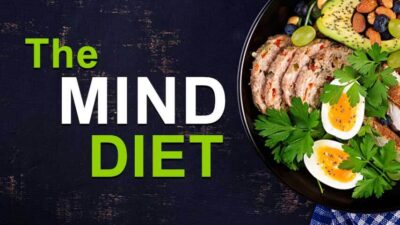The Diet Insiders Score 4.1/5
#2 in Best Diets Overall – Expert Reviews
This article reviews whether the DASH Diet can control high blood pressure.
DASH Diet – Guidelines to reduce Hypertension or High Blood Pressure
Who does not want to live a healthier and happier life? A healthy diet and lifestyle are always the key to prevent or delay the risk of chronic diseases[1].
According to the American Heart Association, in 2005, nearly 2400 Americans died of cardiovascular disease (CVD) per day, which is an average of 1 death every 37 seconds. Approximately 74 million American adults and 1 billion individuals worldwide have hypertension.[2]
An individual with hypertension is at high risk of developing all major forms of CVD, such as atherosclerosis, ischemic heart disease, peripheral vascular disease, and heart failure.[3]
The Seventh Report of the Joint National Committee on Prevention, Detection, Evaluation, and Treatment of High Blood Pressure (JNC7) has classified blood pressure as below–
Classification of Blood Pressure (BP) for adults:[4]
| Category | Systolic BP (mm Hg) | Diastolic BP (mm Hg) |
|---|---|---|
| Normal | <120 | And <80 |
| Prehypertension | 120-139 | Or 80-89 |
| Hypertension Stage 1 | 140-159 | Or 90-99 |
| Hypertension Stage 2 | ≥160 | Or ≥100 |
Many risk factors that contribute to developing hypertension such as age, gender, race or ethnicity, family history, and unhealthy lifestyle habits[5]. Only the unhealthy lifestyle habits we can change or modify to reduce the risk of hypertension.
The Dietary Approaches to Stop Hypertension (DASH) diet is a comprehensive dietary method to lower blood pressure. This diet emphasizes plenty of fruits and vegetables, whole grains, low fat or fat- free dairy foods, fish, lean meat, nuts, and seeds.
Also, the diet recommends reduced sodium intake and increased potassium, magnesium, calcium, and fiber intakes.[6]
Key Components of the DASH Diet:
DASH eating plan is nutritionally balanced, which recommends the following servings from each food group and calories per day depend on age, sex, and physical activity level.[7]
| Food Groups |
Calories/day (depends on age, sex, and physical activity level) and Servings/day by calorie level |
||||
|---|---|---|---|---|---|
|
1,200 Cal. |
1,400 Cal. |
1,600 Cal. |
1,800 Cal. |
2,000 Cal. |
|
| Grains | 4-5 | 5-6 | 6 | 6 | 6-8 |
| Vegetables | 3-4 | 3-4 | 3-4 | 4-5 | 4-5 |
| Fruits | 3-4 | 4 | 4 | 4-5 | 4-5 |
| Fat-free or low-fat dairy products | 2-3 | 2-3 | 2-3 | 2-3 | 2-3 |
| Lean meats, poultry, and fish | 3 or less | 3-4 or less | 3-4 or less | 6 or less | 6 or less |
| Nuts, seeds, and legumes | 3 per week | 3 per week | 3-4 per week | 4 per week | 4-5 per week |
| Fats and oils | 1 | 1 | 2 | 2-3 | 2-3 |
| Sweets and added sugars | 3 or less per week | 3 or less per week | 3 or less per week | 5 or less per week | 5 or less per week |
| Maximum sodium limit | 2,300 mg/day | 2,300 mg/day | 2,300 mg/day | 2,300 mg/day | 2,300 mg/day |
*Adapted from the National Heart, Lung, and Blood Institute, National Institutes of Health
Pros
- Heart healthy & can lower blood pressure
- Nutritionally good
- May aid weight loss
Other potential health benefits;
- Can decrease cancer risk (source 1)
- Lowers metabolic syndrome risk (source 1, source 2)
- Lowers diabetes risk (source 1, source 2)
Cons
- Somewhat pricey
What Do You Eat On The Dash Diet – Healthy Eating Tips
1. Whole Grains: 6–8 Servings per Day
Choose whole grains products such as whole wheat flour or bread, whole oats/oatmeal, brown rice, wild rice, millet, and quinoa. Whole grains have more vitamins, minerals, and fiber than refined grains which reduce the risk of heart disease, as we documented in our article on Optavia 5 and 1 reviews.
Example: one serving of grains is equivalent to
- One regular slice bread
- ½ cup cooked rice
- One small (6 inches) flour tortilla
- ½ cup cooked pasta
2. Vegetables: 4–5 Servings per Day
Select mostly nonstarchy vegetables like spinach, broccoli, carrots, cauliflower, swiss chard, okra, eggplant, bitter melon, cabbage, kale, and Brussels sprouts. Fresh and frozen vegetables are always containing less salt than canned vegetables.
Example: One serving of vegetables is equivalent to
- 1 cup of raw leafy vegetables
- ½ cup cooked or cut-up raw vegetables
- ½ cup of vegetable juice
3. Fruits: 4–5 Servings per Day
Fresh and dried fruits are a good source of vitamins, minerals (potassium and magnesium), and fiber. Choose fresh fruits instead of juices because whole fruits contain more fiber than fruit juices.
Example: One serving of fruit is equivalent to
- One medium fruit such as apple or banana
- ¼ cup of dried fruit
- ½ cup fresh, frozen, or canned fruit
- ½ cup fruit juice
4. Fat-free or low-fat dairy products:
When choosing dairy products, it’s advisable to opt for low-fat or fat-free options, as whole and reduced-fat dairy products contain higher amounts of saturated fat and cholesterol. As we mentioned in our previous document of almased reviews which one of the health supplement containing the popular ingredient Skim Milk Yogurt Powder, the supplement claimed that skimmed milk powder can aid in weight management.
Example: One serving of dairy food is equivalent to
- 1 cup skim milk or plain yogurt
- 1½ oz low-fat cheese
- 1 cup of soy milk
5. Lean Chicken, Meat and Fish: 6 or Fewer Servings per Day
Whenever possible, choose poultry without skin and only lean cuts of meat, such as loin or round. Try to eat fish regularly, such as salmon, mackerel, tuna, and sardines.
Example: One serving of lean meat, poultry, and fish is equivalent to
- 1 egg
- 1 oz cooked lean beef or chicken (without skin)
- 1 oz cooked fish
6. Nuts, Seeds and Legumes
Nuts, seeds, and legumes are a good source of protein, magnesium, mono and polyunsaturated fats, and fiber. Avoid canned beans and mixed nuts, because of the high content of sodium.
Example: One serving of nuts, seeds, and legumes are equivalent to
- ⅓ cup or 1½ oz nuts (almonds, peanuts, walnuts)
- 2 Tbsp peanut butter
- 2 Tbsp or ½ oz seeds (sunflower seeds)
- ½ cup cooked legumes (dried beans, peas, lentils)
7. Fats and oils:
The DASH diet focuses on limit saturated fat, trans fat, sodium, and total fat. Try to select foods with monounsaturated fats (such as avocado, almond butter, olive oil) and polyunsaturated fats (such as walnuts, sunflower oil, flaxseed).
Example: One serving of fats and oils are equivalent to
- 1 tsp vegetable oil (olive, canola)
- 1 Tbsp mayonnaise
- 2 Tbsp light salad dressing
8. Sweets and added sugars:
These types of foods are usually high in saturated and trans-fat. Brownies, cake, cookies, pie, pudding, soda, sports drink, and candy are some examples of this category.
Example: One serving of sweets is equivalent to
- 1 Tbsp sugar
- 1 Tbsp jelly or jam
- ½ cup sorbet, gelatin dessert
- 1 cup lemonade
9. Sodium:
In the DASH eating plan, dietary sodium should be limited to 2300 mg/day or 1500 mg/day depends on an individual’s health status. Most amounts of sodium will get from processed food (such as canned soups, stews, salted chips, and sauces) because only little amounts of sodium will occur naturally in food.
- 1 tsp salt = 2300 mg sodium
- ½ tsp salt = 1150 mg sodium
- 1 tsp baking soda = 1000 mg sodium
Essential Tips to Follow the DASH diet:
- Eat a balanced diet (colorful fruits and vegetables, low fat or fat-free dairy, lean proteins, healthy fats, and whole grains).
- Read food labels carefully- look for serving size, calories, total fat, saturated fat, trans fat, sodium, and added sugar.
- Avoid adding salt in food preparation or at the table.
- Choose low or reduced-sodium, or unsalted food products whenever possible.
- Use low fat or fat-free condiments.
- Limit foods with added sugar.
- Drink water instead of soda or juice.
- Limit excessive alcohol intake (for men no more than two drink/day and women no more than one drink/day)
- Add physical activity of 30 minutes per day.
- Maintain a healthy weight.
- Get enough sleep and manage stress.
Frequently Asked Questions
Q: Do you lose weight on the DASH diet?
A: DASH is not designed for weight loss. Some websites claim that you’ll likely lose weight on the DASH Diet, provided you follow the rules, and especially if you design your plan with a calorie deficit.
Q: How much should you exercise on DASH Diet?
A: Exercise is recommended on the DASH Diet, especially if you want to lose weight.
To get started, try a 15-minute walk around the block each morning and night, and then slowly ratchet up intensity and duration if you can.
Q: Can you drink coffee on the DASH diet?
A: Coffee can be considered on the DASH diet. But please make sure you don’t load it up with whole milk and sugar.
You can add some skim milk to your coffee and avoid the sugar to keep it DASH-friendly.
Q: How much does DASH Diet cost?
A: It can be on the expensive side, since fresh fruits, veggies and whole-grain products are generally pricier than the processed, fatty, sugary foods most Americans consume.
[thb_title title=”Takeaway”]
In several clinical trials, the DASH diet has shown to lower blood pressure[6][8]. According to U.S News and World Report, the DASH diet ranked “best overall diet” in a row eighth consecutive year.
It is easy to follow, effective for lowering high blood pressure, and healthy and nutritionally balanced[9]. Finally, the DASH diet supports long term lifestyle changes and positive health effects.







 This article changed my life!
This article changed my life! This article was informative.
This article was informative. I have a medical question.
I have a medical question.
 This article contains incorrect information.
This article contains incorrect information. This article doesn’t have the information I’m looking for.
This article doesn’t have the information I’m looking for.